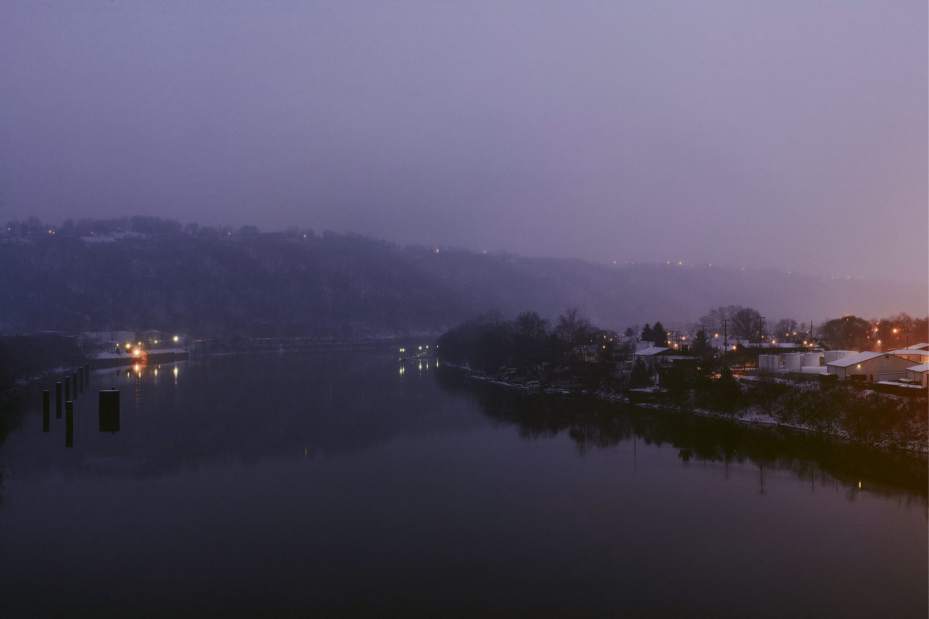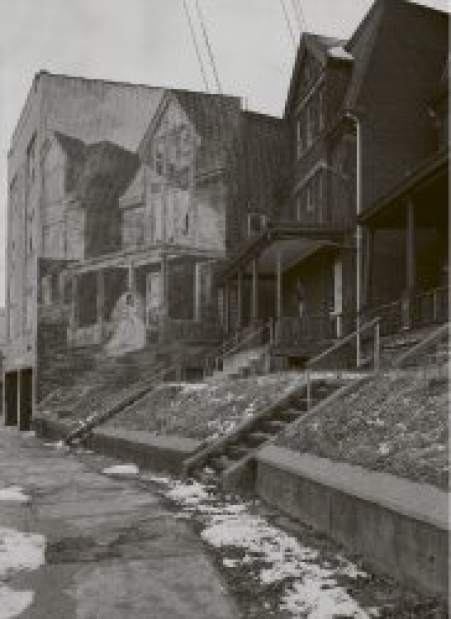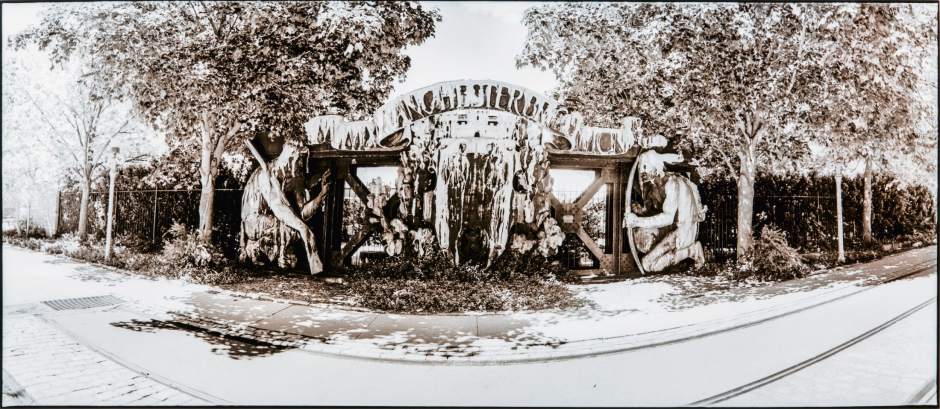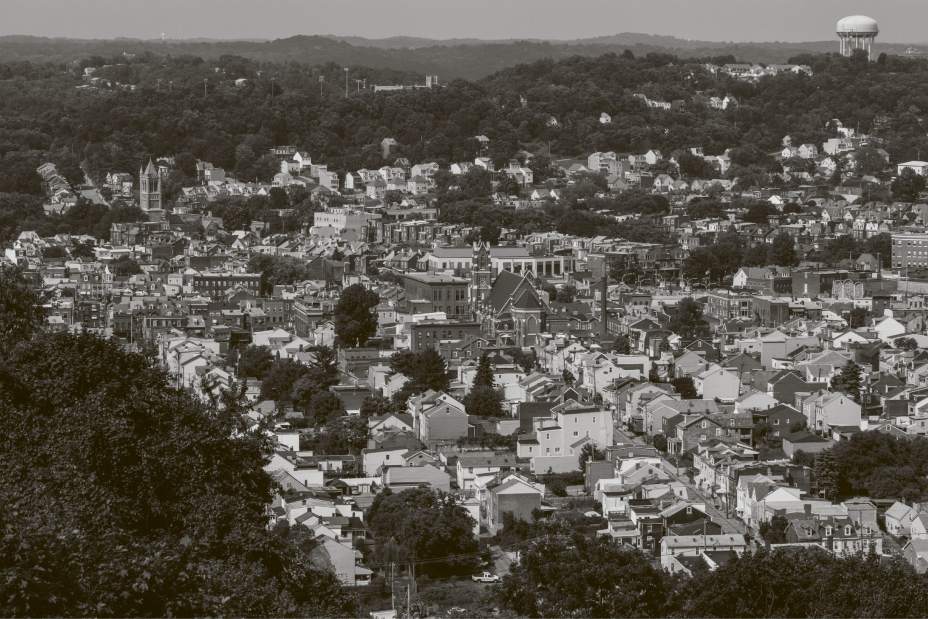Silver Eye Center for Photography showcases new space with 'Past Present Future'
With its bright, new space on Penn Avenue in the Bloomfield-Garfield neighborhood of Pittsburgh, Silver Eye Center for Photography is quick to become the crown jewel of the Penn Avenue Arts District.
The nearly 40-year-old organization left its South Side space nearly a year ago to move into a brand new building, a project of the Bloomfield-Garfield Corporation (a community revitalization organization), at the corner of South Mathilda Street and Penn Avenue, opening officially just over a month ago.
On display now, the inaugural exhibition in this newly designed space, “‘Past Present Future,” focuses on Western Pennsylvania's people and places over the past 100 years.
The exhibit features over 100 photographs from regional artists. Some names of which – such as Luke Swank, W. Eugene Smith, Charles “Teenie” Harris and Clyde Hare — will be very familiar to the regional audience, and some less so.
One familiar name in the field of photography is Aaronel deRoy Gruber for which the main exhibition space is named after her and her late husband Irving, thanks to a generous grant from The Irving and Aaronel deRoy Gruber Foundation.
Having an open floor plan and high ceilings–perfect for the museum quality exhibitions and events for which Silver Eye is known, this new gallery space has been designed to Silver Eye's specifications by architect Jeffrey King of The Design Alliance Architects.
Here four works by Gruber take center stage, each featuring unique takes on local landmarks such as Kennywood and the Manchester and Homestead High Level Bridges.
Beginning her artistic career as a painter, the late Ms. Gruber was a gifted and prolific artist throughout a career that spanned over 60 years. In the late 1980s, she took up photography, her subjects ranged from silent steel mills to panoramas of Pittsburgh to bridges in Scotland.
Mrs. Gruber showed her photographs at Silver Eye several times over the years, most recently in 2009 with the solo exhibition “The Analytical Eye.” She remained a passionate and dedicated artist until her death in 2011.
The remaining works are presented in a non-linear salon style, presenting the history and beauty in the hills, valleys and people of the region.
For example, Ross Mantle displays several untitled evocative images that capture the unique topography of the region, as does Ed Panar whose image “June 2014” from his series “City Atlas” gives viewers a sweeping view of a typical densely packed Pittsburgh neighborhood, in this case nearby Bloomfield.
The oldest work on display is a photograph of the Shenango Furnaces in 1869 by a relatively unknown photographer identified as L.S. Baker.
The gritty, grainy image offers a perfect backdrop to the more iconic steel industry realted works, such as Hare's famous “Teeming Platform” (1958) from the Pittsburgh Photographic Library, a photography repository held by the Carnegie Library of Pittsburgh of over 50,000 prints and negatives relating to history of Pittsburgh.
Another of Hare's work from the Pittsburgh Photographic Library on display is one of his best-known and widely recognized — “Pedestrians and street car tracks, 6th and Smithfield.” Featuring a bird's-eye-view of a Downtown Pittsburgh street corner, Hare shot in 1951 while perched high above on top of the Henry W. Oliver Building.
Other landmarks of note include Stephen Joyce's “The Bride” (2014) which highlights the Judy Penzer's “The Bride of Penn Avenue” mural on a house further up on Penn Avenue in Garfield.
Penzer, whose large-scale sports murals were common sites on Pittsburgh buildings, died in the crash of TWA flight 800 in July 1996. She also painted a sports mural on the side of a building at 500 Wood St., Pittsburgh. The painting, which depicted Bill Mazeroski, Roberto Clemente, Jack Lambert and other Pittsburgh sports heroes, was demolished in 1997. The Bride, however, lives on.
And speaking of sports, no exhibit of Pittsburgh photographs would be complete without a nod to the competitive nature of the people of the region. Here summed up so perfectly in pictures taken at Aliquippa High School Football Stadium by Pete Marovich for his recent series “Searching for Dream Street,” an obvious nod to W. Eugene Smith's seminal “Pittsburgh Project” which documented life in Pittsburgh in the 1950s.
Four mid-20th century prints from that series are also on display, including one of a Bessemer Furnace and another of a factory worker at Copperweld, both obviously harkening to the hard-working labor force that built this region.
Smith is credited with developing the photo essay to its ultimate form. He was an exacting printer, and the combination of innovation, integrity, and technical mastery in his photography made his work the standard by which photojournalism was measured for many years, which is why the inclusion of his work in this exhibition brings the imagery full-circle in telling the tales of the region.
Kurt Shaw is the Tribune-Review art critic.





